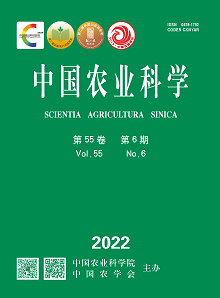【Objective】The aim of this study was to identify the impact of straw mulching and plastic film mulching on wheat production in Northern China, so as to explore the suitable promotion areas of two mulching systems.【Method】In this study, a total of 165 literature was retrieved and screened in recent 40 years, which were put into the framework of Meta-analysis, and were carried out through different forms of overall effect analysis (such as change rate and response ratio) for theoretical research. Generally, by adopting random effect model, the changes of wheat agronomic indexes and farmland moisture conditions under different mulching patterns were analyzed. Then, the response rules of mulching yield increasing effect to various environmental conditions (altitude, precipitation, temperature, and sunshine) and field management measures (mulching period, planting density, tillage, and fertilization) were revealed by subgroup analysis, while the function fitting, weight analysis and statistical test were carried out. The correlation between the variables involved in this study was quantitatively analyzed by Pearson correlation coefficient method.【Result】Compared with the open field cultivation, the straw and plastic film mulching significantly increased wheat yield by 19.53% (95%CI =0.55%-38.52%) and 24.91% (95%CI =3.18%-46.64%), which also inhibited field evapotranspiration. Furthermore, it was found that there were some differences in contribution rate of yield components to yield under different mulching patterns, which were: effective spike number > grain number per spike > 1000 grain weight (straw mulching); effective spike number > 1 000 grain weight > grain number per spike (plastic film mulching). The increase of grain number per spike under straw mulching was higher, that about 5.7% (95%CI = -4.10%-15.50%); while increase of effective spike number and 1000 grain weight under film mulching was more significant, which were 25.2% (95%CI = 14.11%-36.29%) and 6.4% (95%CI = 1.50%-11.30%), respectively. In addition to the advantages of promoting production, the biomass and water use efficiency of film mulching were also 18.17% and 14.39% higher than that of straw mulching, respectively. Specifically, the yield increase rate of plastic film mulching was 0.89%-23.34% higher than that of straw mulching in most meteorological subregions. Meanwhile, with the declined of terrain height, the yield increasing effect of plastic film showed the growth trend, compared with non-mulching treatments, and the yield increase rate could reach 34.26% in low altitude area (< 800m). However, the yield increasing advantage of plastic film mulching over straw mulching was declined gradually with the increase of mulching years. In the more than 8 years of mulching experiments, the overall yield increasing rate of straw mulching was higher. The yield of straw mulching was also affected by fertilization and tillage measures, especially in the three treatments of no tillage, no fertilization and applying phosphate fertilizer, the yield increase rates were 32.68%, 25.94% and 21.71%, respectively. According to statistical test, among the three subgroups of altitude, average annual sunshine hours and planting density, their inter group heterogeneity Q test statistics were larger, indicated that the variation degree of each effect quantity in these groups was higher. Finally, it was found that under the conditions of straw and plastic film mulching, the factors with the highest correlation to yield were effective spike number (r = 0.808) and water use efficiency (r = 0.718), while the most primary factors affecting the soil water content in two mulching systems were evapotranspiration (r = -0.859) and water use efficiency (r = 0.856), respectively.【Conclusion】In conclusion, these two mulching patterns possessed obvious effect on yield increase, while plastic film mulching had more advantages in low altitude, relative drought and cold regions; The straw mulching was more suitable for long-term conservation tillage system, so as to achieve the coordinated development of production and ecology. Therefore, the key to the success of wheat mulching technology in northern China is to choose scientific mulching methods according to local and time conditions.









